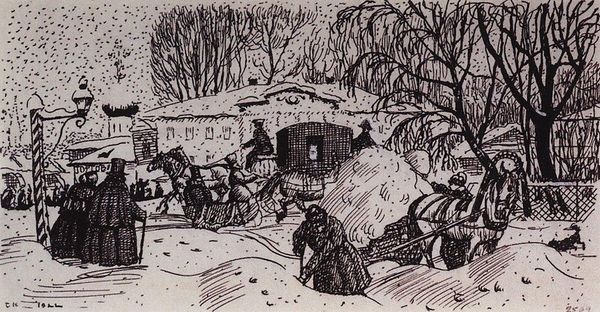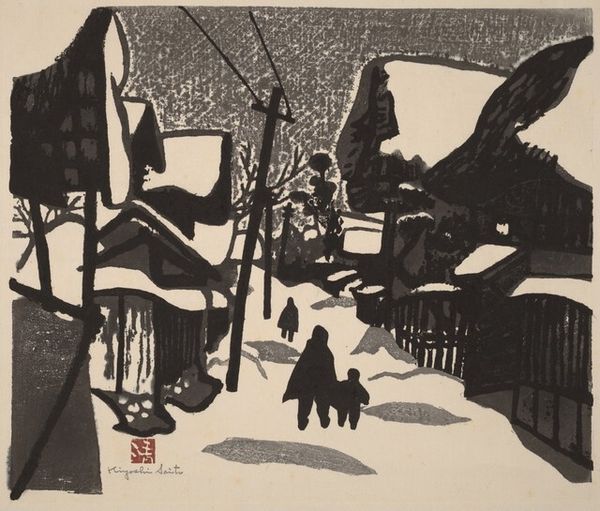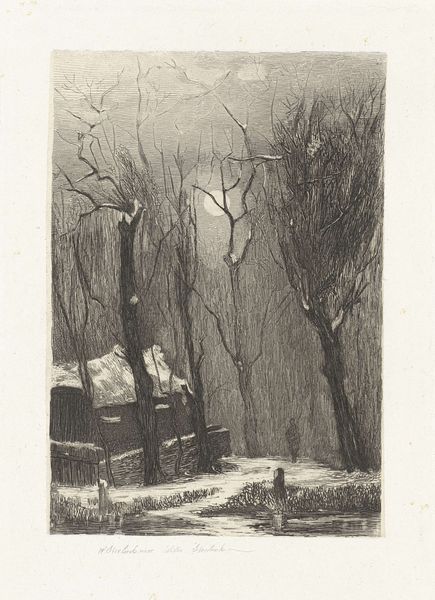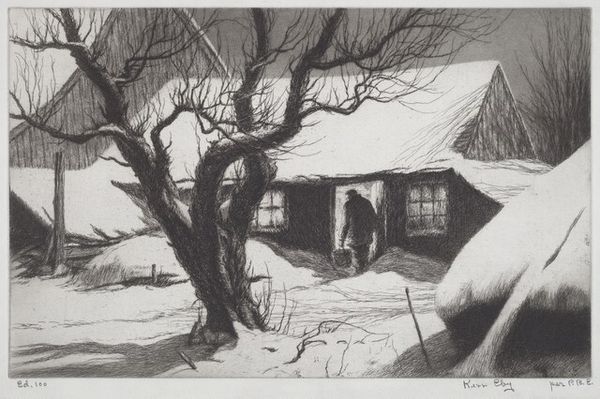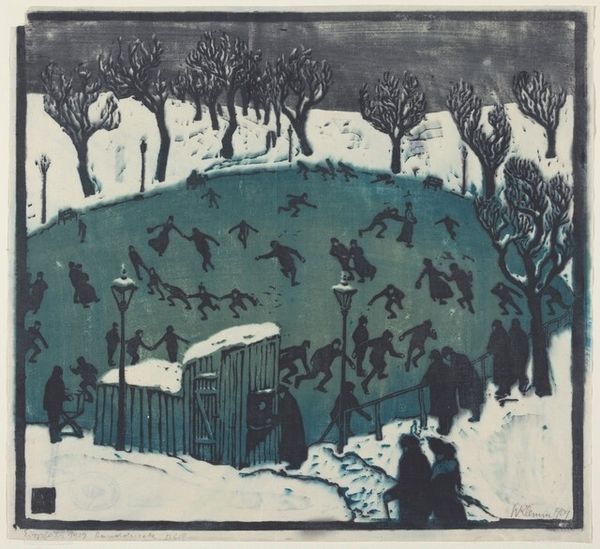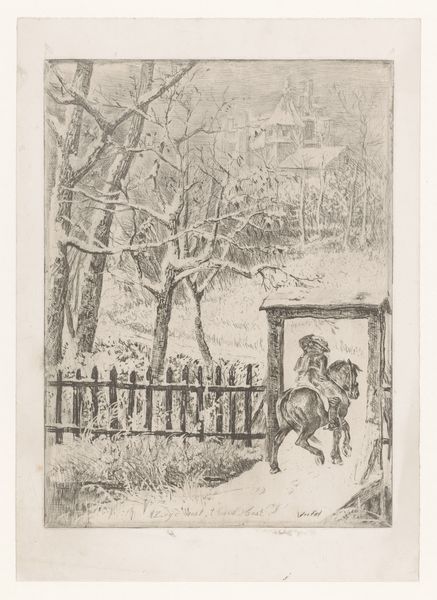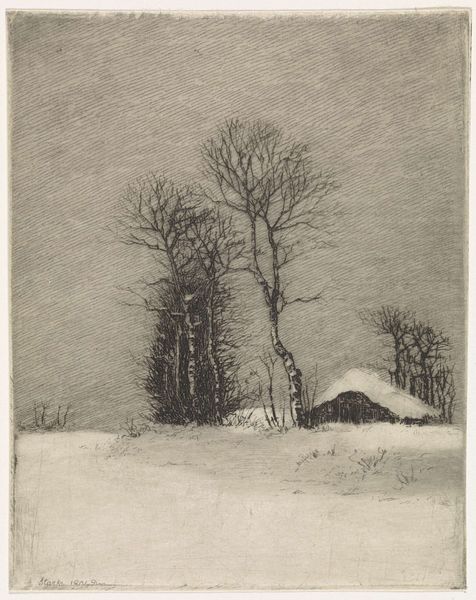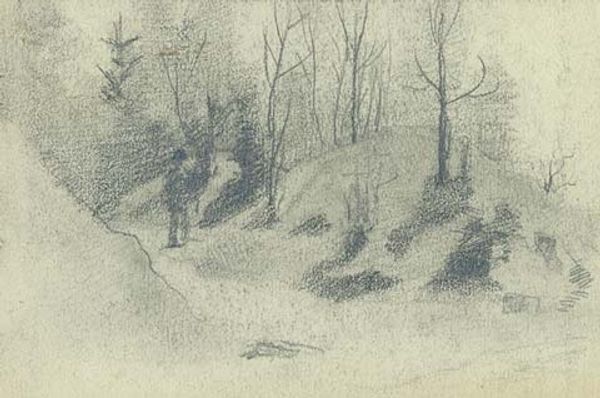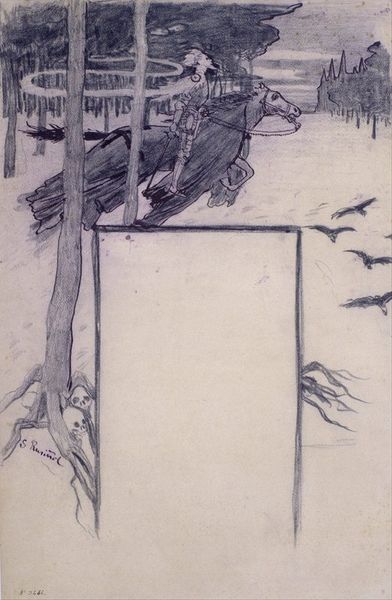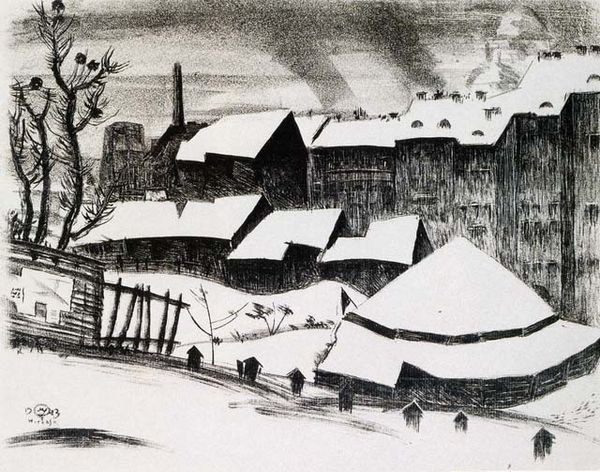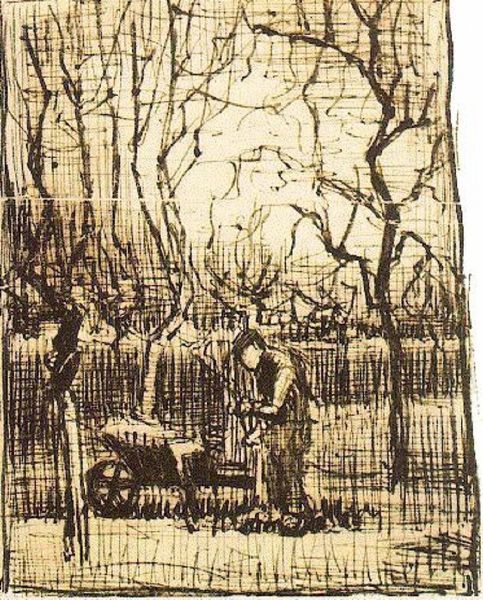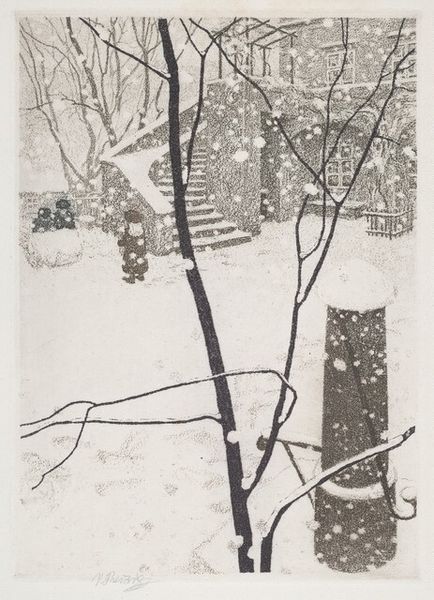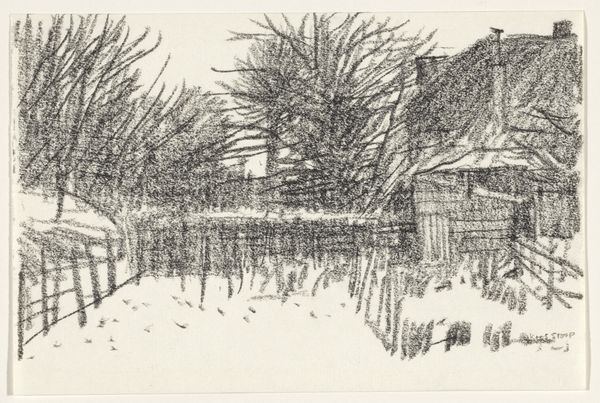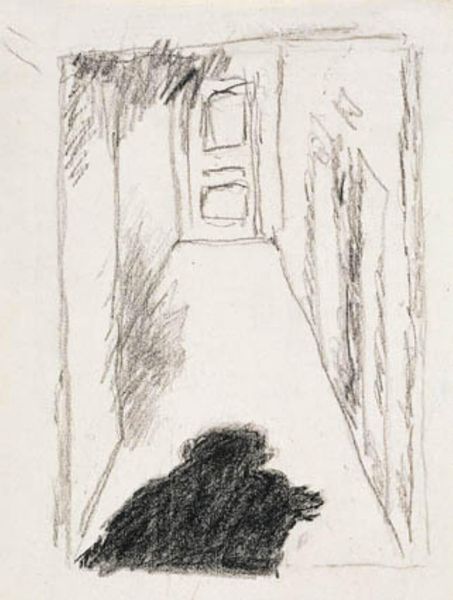
Dimensions: 35.3 x 24.4 cm
Copyright: Public domain US
Curator: The drawing before us, created with ink on paper by Mstislav Dobuzhinsky in 1922, is titled "Summer Garden in Winter". Editor: My first impression is of stark loneliness, punctuated by a surreal and almost unsettling stillness. The severe vertical lines amplify the cold emptiness. Curator: Indeed. Dobuzhinsky's symbolic language evokes the frozen garden's dormant memories. The statue, enshrined in a sort of crude shelter, suggests an artifact or a relic of a forgotten past. Perhaps a lost promise of warmth. Editor: Yes, the way the statue is framed is striking. Its stark lines emphasize its stillness and coldness. Dobuzhinsky creates contrast through shadow and highlights the statue within the wooden structure using precise marks, rendering depth within the monochromatic scene. Curator: Note how the delicate ink strokes capture the bleak winter light on snow, mirroring cultural displacement following the Revolution. The statue represents the pre-revolutionary world. The shed-like covering signifies the new utilitarian world that obscures and confines traditional beauty. The trees almost appear as a protective barricade, preserving memory against ideological intrusion. Editor: That is insightful. Focusing on its formal qualities, I'm fascinated by the bare branches cutting through the sky, contrasting with the statue’s smooth surface. They become almost calligraphic elements, expressive marks against the blankness. And those faint, ghostly footprints hint at a lost path, maybe of the pre-revolutionary aristocracy who had maintained and enjoyed this garden. Curator: Exactly, visual remnants evoke collective memory, where symbols whisper continuity amidst violent cultural ruptures. In Russian symbolism, winter carries allegories of spiritual trial. The artist communicates how memory becomes our salvation. Editor: I now find myself lost within this cold, historical memory lane, in Dobuzhinsky’s deliberate interplay of structure, light, and symbolic form, which deepens the sense of longing. Curator: Hopefully our discussion kindled some of this warmth. Dobuzhinsky reminds us that through symbols and memory, we find refuge and hope amid collective freezing winters. Editor: Thank you, I think I understand the artwork better. By looking more deeply, one can discover the underlying contrasts that convey meaning.
Comments
No comments
Be the first to comment and join the conversation on the ultimate creative platform.
